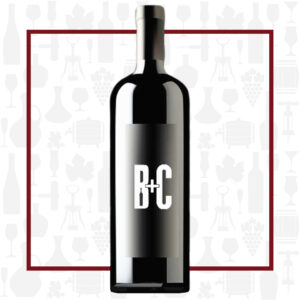Cellar Profile
In 1999, Pinot Noir devotee Charles Smedley purchased 10 acres of land in Yarra Junction. This area was much colder than other areas of Yarra Valley and experienced higher than average rainfall. He set about planting Burgundian clone Pinot Noir, with an eye towards crafting elegant, signature Pinots displaying the terroir and character of the region. A decade later, the winery now has another larger vineyard where there is Chardonnay, Cabernet Sauvignon, Shiraz, Merlot, Pinot Noir and Sauvignon Blanc under vine, all with that house style of elegance and sensibility. Mandala’s vineyards are hand-pruned and hand-harvested, with minimal intervention for the low-yielding vines. The long, cool ripening season allows full phenolic ripeness that ensures depth of flavour without high alcohol levels. These are characterful wines that have a level of complexity that truly tells the tale of the Yarra Valley.
Region
The Yarra Valley is a well-respected Australian wine region which occupies the eastern half of the Port Phillip viticultural zone in the diminutive state of Victoria. One of Australia’s oldest and most celebrated wine regions, the earliest Yarra Valley vineyards were planted in 1838. The climate here is amongst the coolest of any Australian wine region, partly due to elevation—which reaches 500 masl—but mostly due to the hilly topography, which creates shadows, shelter and heat sink.
Vineyard
The Yarra Junction vineyard is home to 10 acres of ‘Burgundian clone’ Pinot Noir vines, which owner Charles Smedley lovingly planted on a north-facing slope in 1999. This particular slice of the Yarra Valley map has a colder climate and records greater rainfalls than average. The clay loam and volcanic mix soil contributes to exceptional Pinot Noir growing conditions.
Varieties
Pinot Noir—chiefly associated with the Burgundy region of France— is grown around the world, mostly in cooler climates. The grape’s tendency to produce tightly-packed clusters makes it susceptible to several viticultural hazards involving rot that require diligent canopy management. When young, wines made from Pinot Noir tend to have red fruit aromas of cherries, raspberries and strawberries. As the wine ages, Pinot has the potential to develop more vegetal and earthy aromas that can contribute to the complexity of the wine. Thin skins and low levels of phenolic compounds lend Pinot to producing mostly lightly-coloured, medium-bodied and low-tannin wines that can often go through phases of uneven and unpredictable aging.
Winemaking
Hand-harvested from select vineyards. The grapes are given a cold soak before a long, temperature-controlled ferment using indigenous yeasts. Aged in a combination of used and French oak barriques.
Tasting Notes
Bright and vibrant. Notes of red cherry, spice box and a touch of bramble on the nose. Zesty acidity and ripe red berry fruit dominate the palate. There is a bit of sweet oak vanillin, but it is well integrated with the primary fruit. There are some soft back end tannins that help add structure and complexity. This would pair wonderfully with planked salmon on the grill.

 info@buyersandcellars.ca
www.buyersandcellars.ca
info@buyersandcellars.ca
www.buyersandcellars.ca